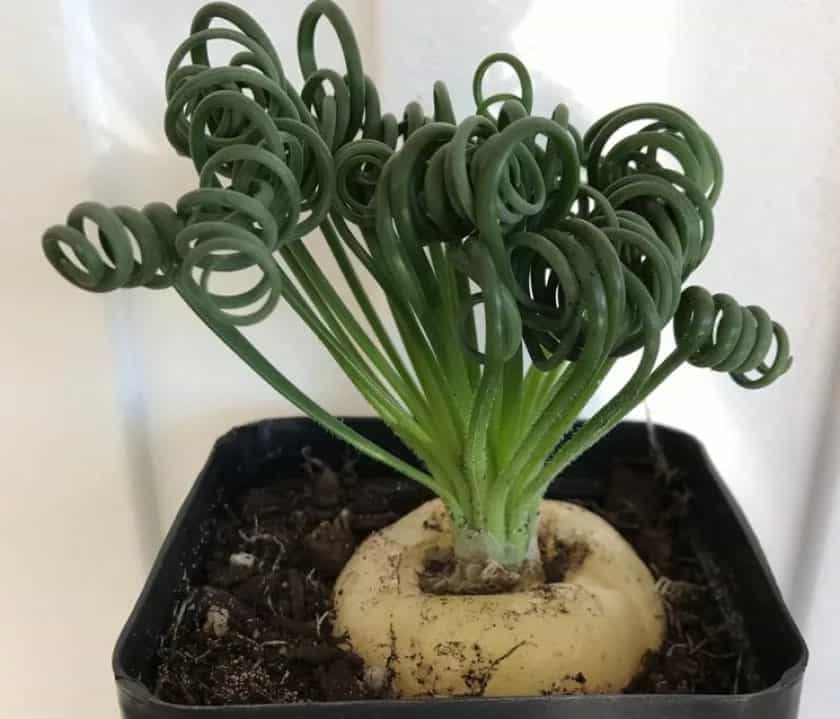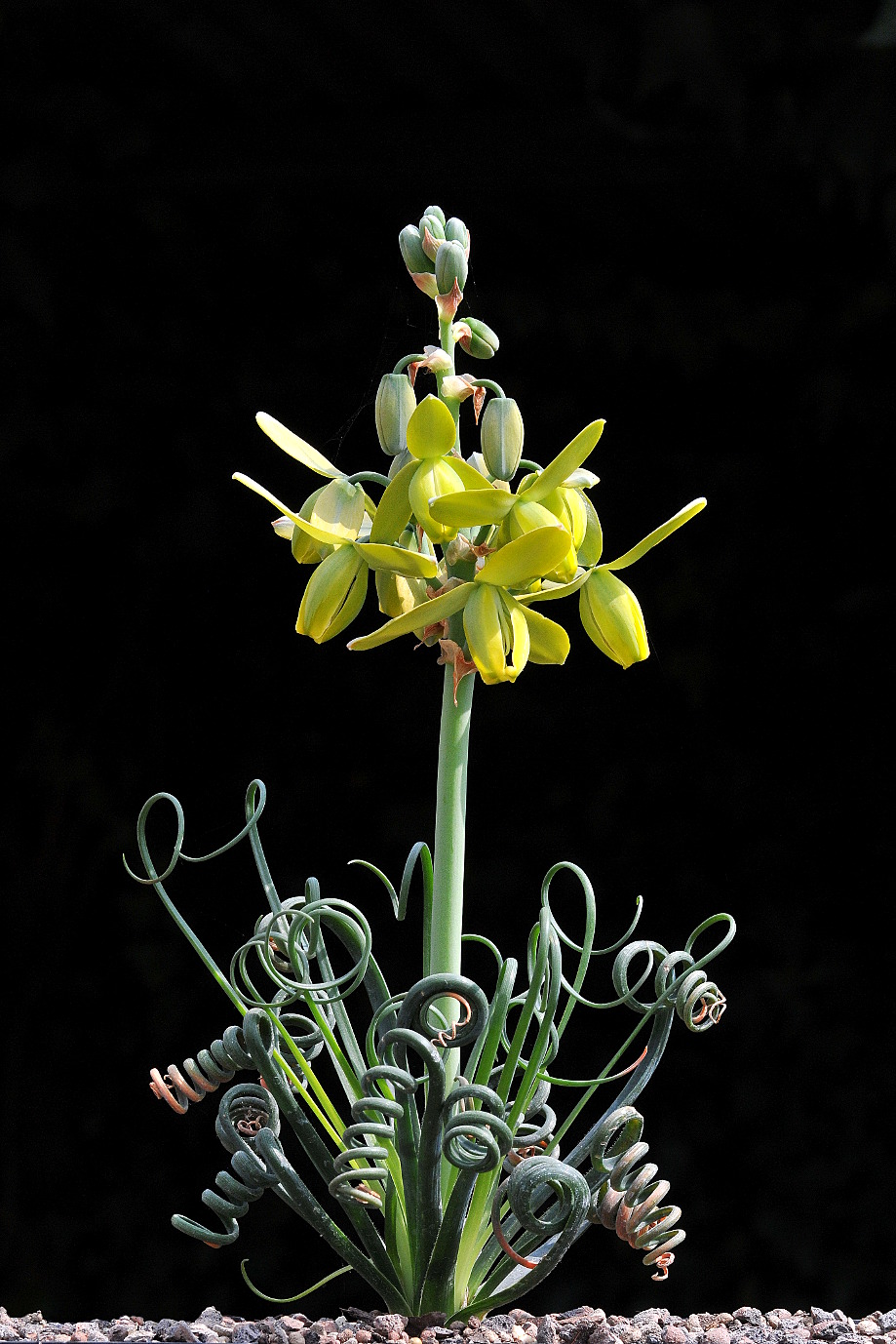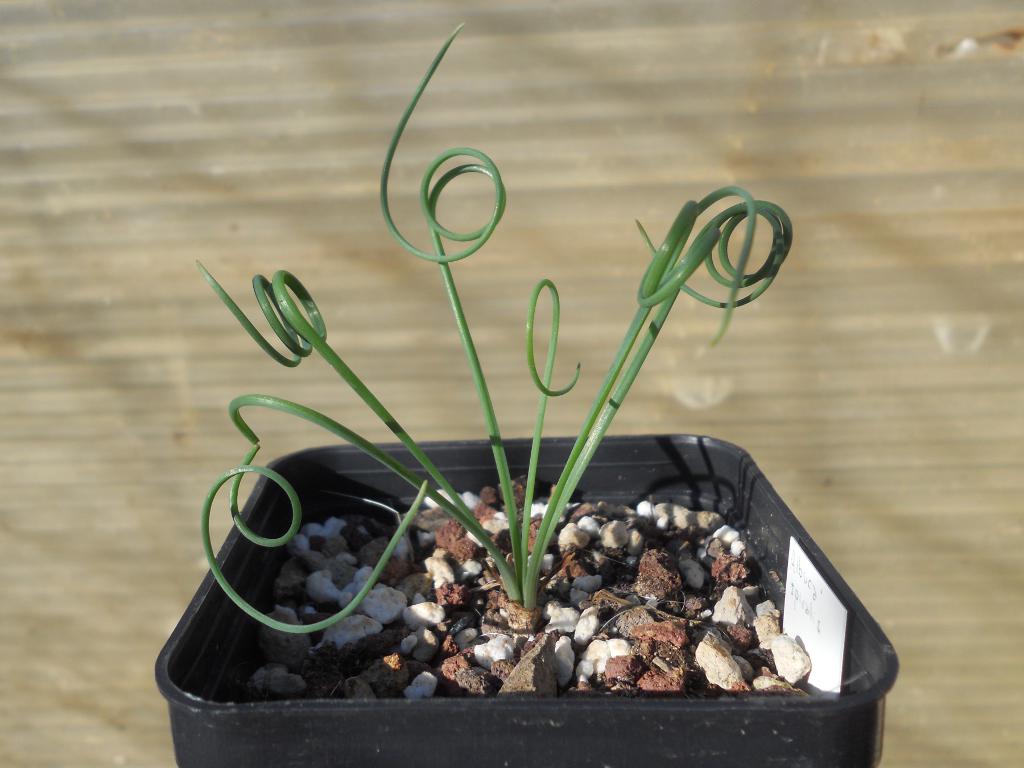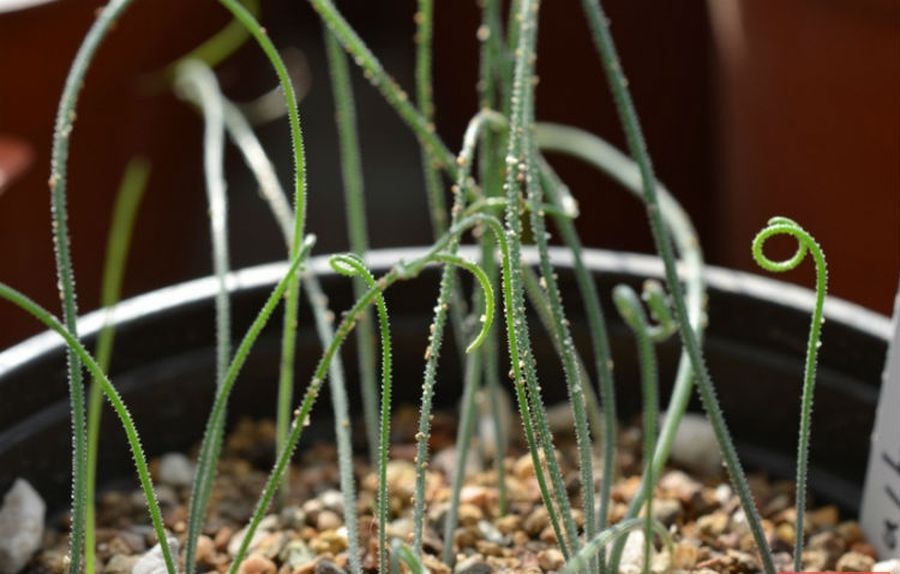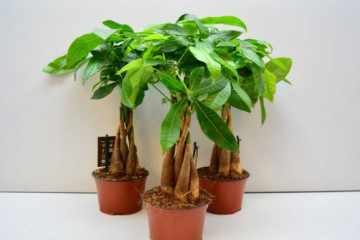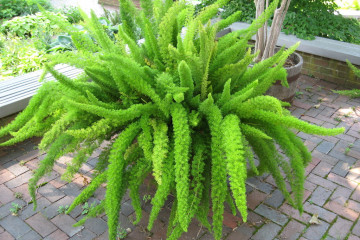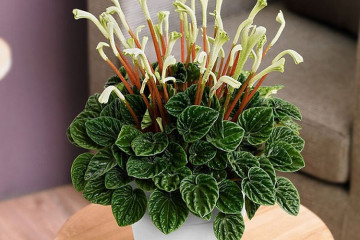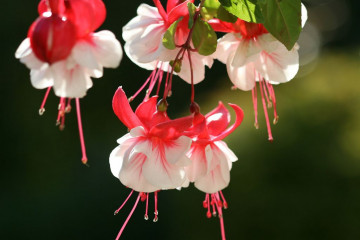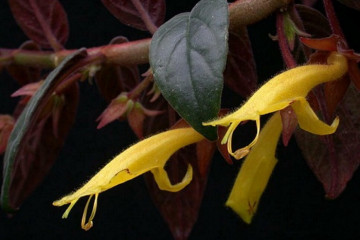Spiral albuka - home care
Content:
The homeland of this plant is South Africa. It is often grown at home. This is due to the unusual appearance and beautiful flowers. The spiral albuca got its name for the shape of the stems and the ability to eject peduncles with white inflorescences (albuca spiralis means "shooting white").
Description of an unusual flower
Albuca spiralis is a succulent plant that has special tissues where water reserves accumulate.
A flower grows from a bulb that looks like this:
- Round, slightly flattened shape;
- White color;
- Average diameter - 5 centimeters;
- The roots are fibrous, white.
An albuca flower grows on average from 15 to 20 leaves. They are collected in a single outlet at the beginning of the root. In length, the greenish-gray leaves of the plant rarely reach more than 15 cm. In shape, they resemble a spiral, for which the flower received its name.
The length of the peduncle can reach 60 cm. Unlike the leaves, it is gray and fleshy. The inflorescence is loose, brush-shaped. On average, it contains from 10 to 20 flowers directed downward. The diameter of the flower is about 3 centimeters, they grow on a four centimeter peduncle.
Outwardly, the flowers resemble bells, only pale green or pale yellow. Each flower has 6 petal lobes arranged in 2 circles. The first three petals are located in a horizontal plane, the second three are directed downward to protect the pistil and stamens. The plant has a creamy vanilla aroma, but not all of its types are characterized by aroma. Albuca bears fruit in the form of boxes, where black glossy seeds are located.
Albuca care at home
Growing a flower at home is easy. It is enough to observe the following recommendations:
- The plant is very light-requiring. It is recommended to install it on a window with the greatest illumination. This will ensure good growth, normal development and abundant flowering.
- There are also certain requirements to the soil: lightness, high ability to pass water and air, a significant content of coarse sand.
- Spiral albuka is very thermophilic. In summer, the optimum temperature for growing is 25-28 degrees, in winter - 13-15 degrees Celsius.
- The flower consumes most of all moisture during intensive growth and ejection of flowers. The plant belongs to the category of succulents, which means that it is necessary to water abundantly, but not often. Determining that a flower needs moisture is simple: just touch the topsoil. If it is dry, the albuca should be watered. Stop watering when dormancy occurs (leaves have died).
- Top dressing is required only during growth and flowering. It is better to use various complex materials as fertilizer.
What to do if the leaves do not curl
The main reason for straight leaves is stagnation of water in them.Since succulents have the ability to store moisture in special fabrics, over-watering can cause problems. There are two solutions in this case:
- Reduce the amount of water for irrigation. The flower needs moisture only during flowering and intensive growth. The rest of the time, it may well manage with a minimum amount of water. Water should only be done when the potting soil is dry. Excess moisture will lead to its stagnation in plant tissues, which will entail various diseases, possibly death.
- Provide stable illumination for at least 18 hours. For this, it is quite possible to use fluorescent lamps or special lighting devices. In addition to their direct action (lighting), they will have a thermal effect on the albuca. This will require her to spend her water reserves. As a result, excess moisture from the tissues will be naturally removed, and the plant will return to its usual appearance.
An increased amount of moisture can lead to leaf fall. Problems also arise in the case of low temperatures, low lighting. The plant does not like drafts.
Flowering features
The ejection of the peduncle of the spiral albuca occurs, as a rule, in April-May. This is due to the fact that flowering requires a significant temperature difference between night and day, this condition is most often observed in the spring.
You can admire the flowers of the albuka for 10 weeks. The inflorescences of the plant are bell-shaped with 6 petals bent in different directions. Some types of spiral albuka have a delicate and pleasant aroma, which is gaining great popularity among lovers of home floriculture.
At the end of the flowering period, seed pods are formed on the stems. At this point, it is necessary to significantly reduce or stop watering, since the flower is preparing for a dormant period. He sheds leaves, all processes slow down in him. The end of the season for albuca care comes in the fall.
Seed propagation
Albuca is grown from seeds or bulbs. If the bulb can be simply transplanted, then the step-by-step instructions for working with seeds are as follows:
- Step 1. Acquisition of seeds and soil.
- Step 2. The container with soil and seeds should be covered with glass or foil to ensure a greenhouse effect. It is necessary to wait for sprouts in a well-lit room with a temperature of 26-28 degrees for 14 days.
- Step 3. It is recommended to place the pot in a well-lit place. If there is enough light, after a few months, the leaves will take on a spiral appearance. A fluorescent lamp can be used if necessary.
- Step 4. If you take proper care of the sprouts, bulbs will form by the end of the first year of their life. They should be transplanted into separate containers. The first flowers will have to wait three years.
Spiral albuka care at home is simple. This plant is a succulent and does not require much attention. It is enough to provide the required amount of light, heat and moisture, and the plant will delight the owner with its beautiful flowers.
